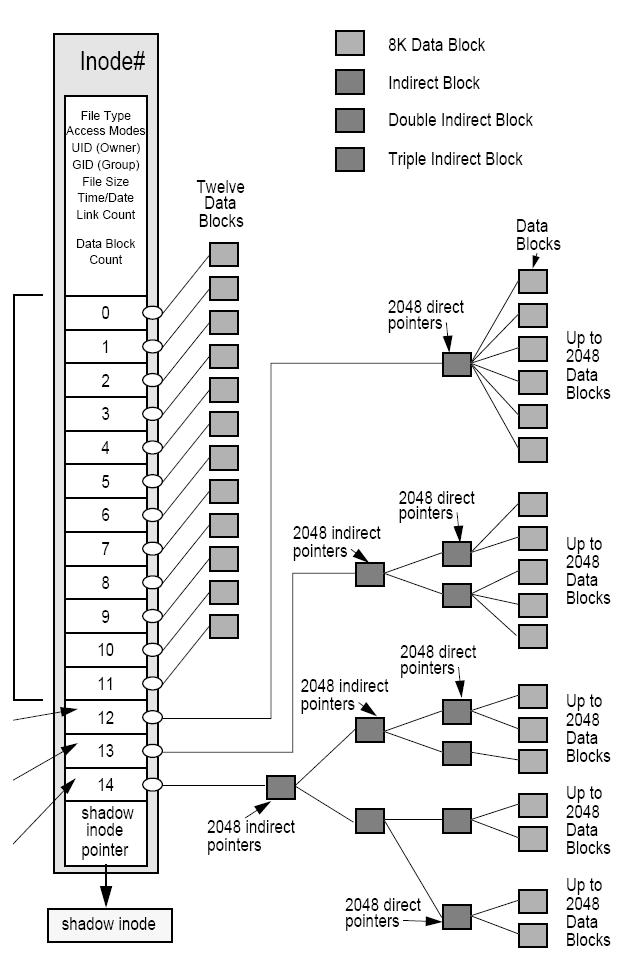An inode contains the following information about a file:
- The type of file and the access modes
- The UID and GID numbers of the file’s owner and group
- The size of the file
- The time the file was last accessed or modified, and the inode changed
- The total number of data blocks used by, or allocated to the file The inode contains two types of pointers:
direct pointers and indirect pointers.

Direct Pointers
There are 12 direct pointers, which refer directly to data blocks.
The 12 direct pointers can directly reference the data blocks for a file up to 96 Kbytes.
Indirect Pointers
The three types of indirect pointers are:
Single indirect pointer – A single indirect pointers refers to a file system block containing pointers to data blocks. This file system block contains 2048 additional addresses of 8-Kbyte data blocks, which can point to an additional 16 Mytes of data.
Double indirect pointer – A double indirect pointer refers to a file system
block containing single indirect pointers. Each indirect pointer refers to a
file system block containing the data block pointers. Double indirect
pointers points to an additional 32 Gbytes of data.
Triple indirect pointer – A triple indirect pointer can reference up to an dditional 70 Tbytes of data. However,
the maximum file size is limited to 1 Tbyte in a ufs file system.
'Programming > Linux' 카테고리의 다른 글
| 유닉스/리눅스 명령어 레퍼런스 (0) | 2008.03.26 |
|---|---|
| Man Page/sigaction (0) | 2008.03.26 |
| alias 설정 방법[출처] [한소프트 펌] 명령어를 내 마음대로 바꾸자 - alias 설정 방법|작성자 큐군 (0) | 2008.03.25 |
| POSIX? (0) | 2008.03.24 |
| Ext2 파일시스템의 구조 (0) | 2008.03.20 |